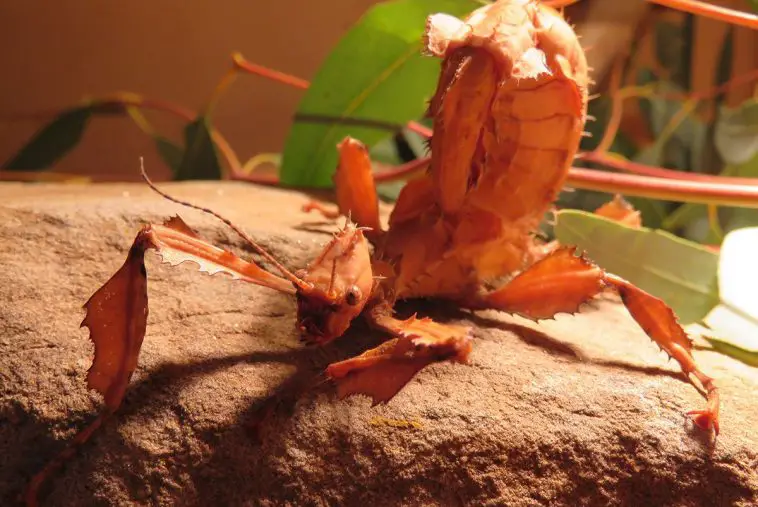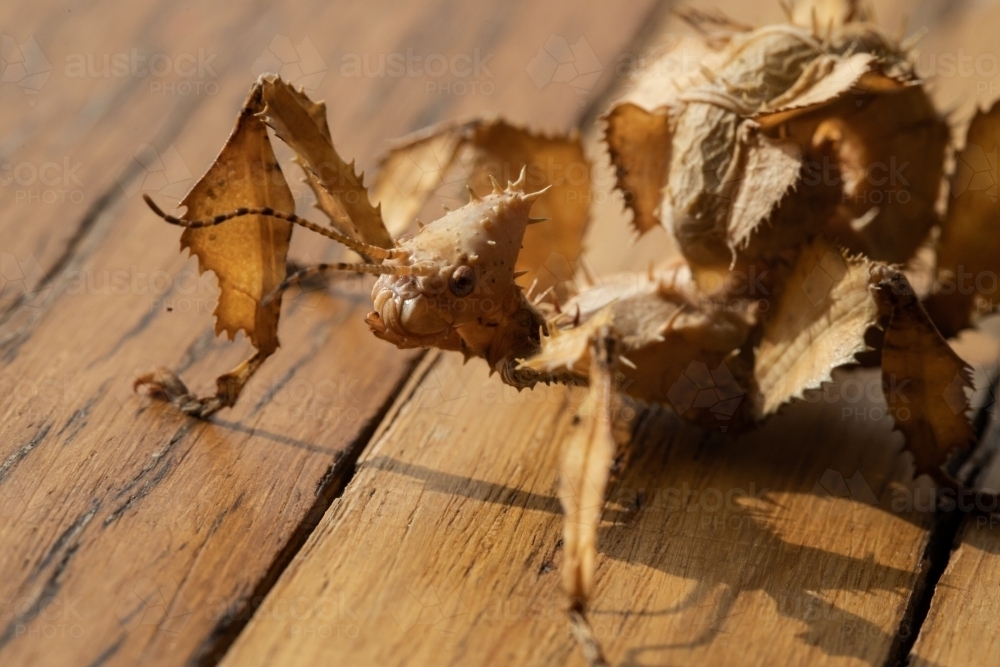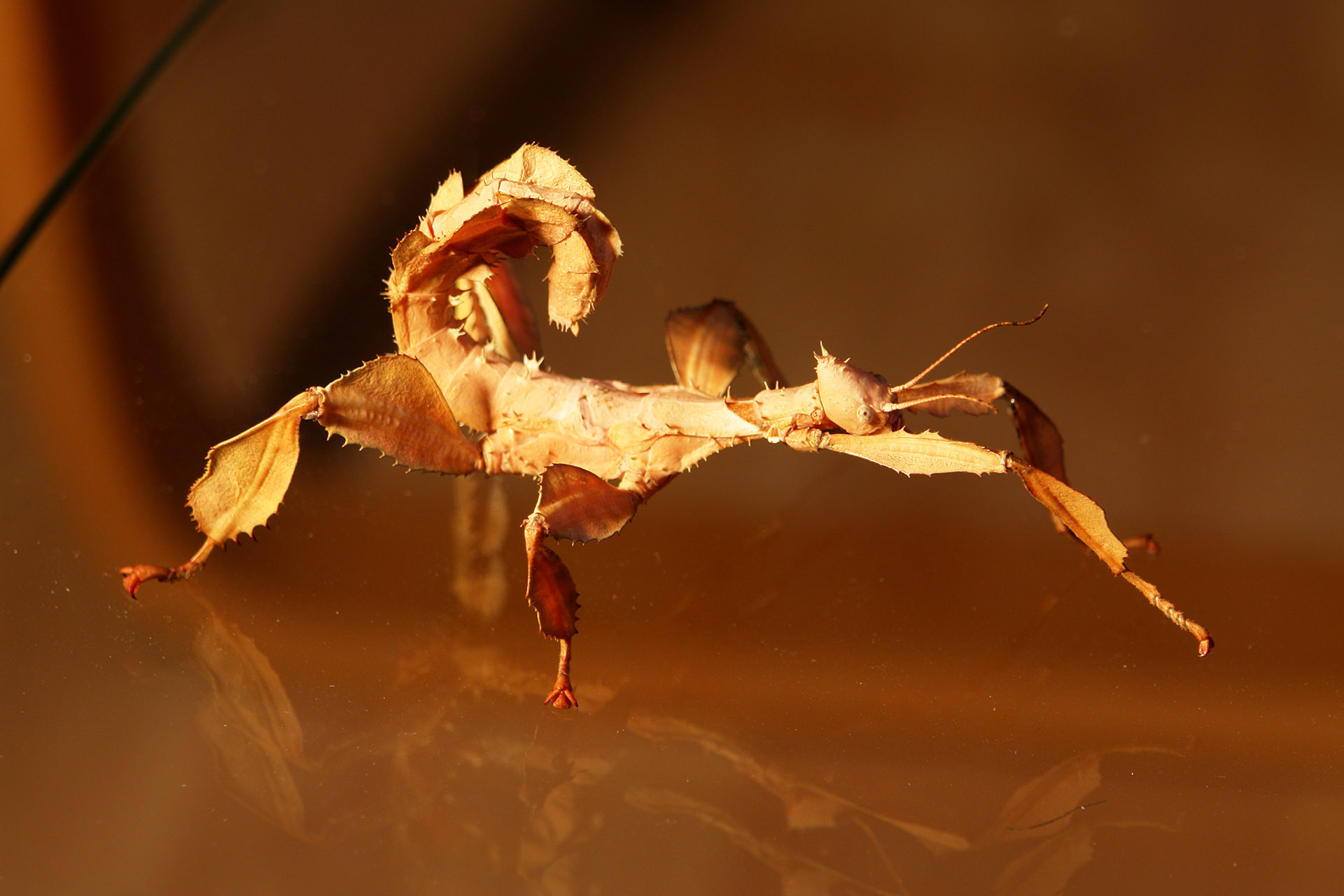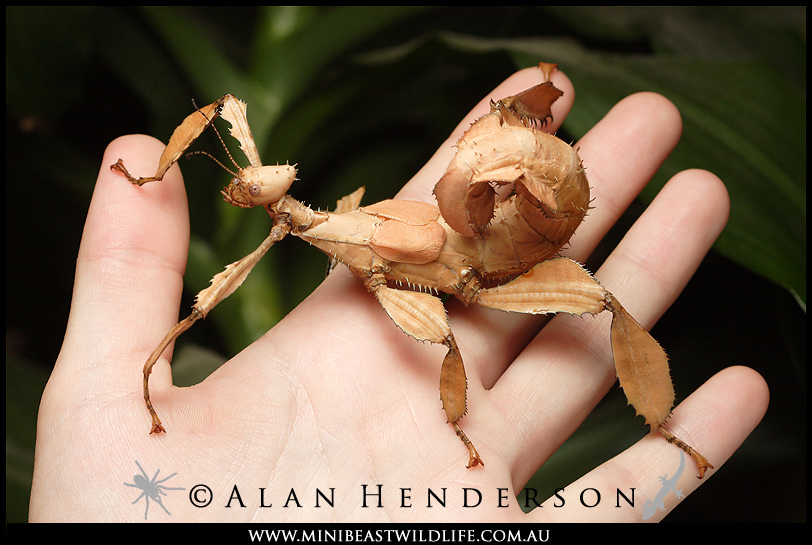These herbivores look like leaves, twigs, and bark—giving new meaning to the phrase "You are what you eat." Phasmids , commonly known as stick or leaf insects, often fade into the flora to.. Females are brown or green and covered with thorn-like spikes for defence and camouflage. Males are smaller, only growing up to 11 cm, and are brown or sometimes pale green. They only have spikes around the head but have long wings and are good fliers. Diet: Spiny Leaf Insects are herbivores, usually feeding on the eucalyptus trees that live in.

Spiny leaf insect Stock Image F031/4573 Science Photo Library

Giant Spiny Leaf Insect (Heteropteryx dilatata) Starmind Conservation

Spiny leaf insect Stock Image F031/4572 Science Photo Library
Spiny leaf insect, large species of Australian stick insect, Extatosoma tiaratum Stock Photo by

A spiny leaf insect laying an egg The eye of E.T. 2D version YouTube

Spiny Leaf Stick Insect The Animal Facts

Spiny Leaf Beetle from Australia What's That Bug?

Image of A juvenile female Australian spiny leaf insect, Extatosoma tiaratum Austockphoto

Spiny Leaf Insect Perth Zoo

Spiny Leaf Insect Eating Rose Leaves YouTube

Spiny leaf insect Stock Image F031/4571 Science Photo Library

Keeping Spiny Leaf Insects as Pets Phasmid Facts and How to Care for These KidFriendly Bugs

How To Best Care For Your Spiny Leaf Stick Insect

Spiny Leaf Insect Extatosoma tiaratum Adult female YouTube

Spiny Leaf Insect Minibeast Wildlife

Leaf and Stick Insects Order Phasmatodea The Australian Museum

Female Spiny Leaf Stick Insect (Extatosoma Tiaratum) Eating a Eucalyptus Gum Tree Leaf

Spiny Leaf Insect (Extatasoma tiaratum). They eat eucalyptus leaves and are available to keep as

Spiny leaf insect molting YouTube

Spiny Leaf Insect ZooChat
The spiny leaf insect is one of the few species that reproduce via 'facultative' parthenogenesis, meaning females can reproduce sexually and via parthenogenesis. Little is known about the evolution of parthenogenesis. So Yasaman is using a variety of techniques to understand this phenomenon: from molecular biology to behavioural ecology.. 1. Keep the cage well aerated (this won't be a problem if you have a fly screen cage). This will help keep the air in the cage clean. 2. Keep the insects and the leaves away from any kind of chemical. Chemicals can poison the insect, which usually results in death. 3.